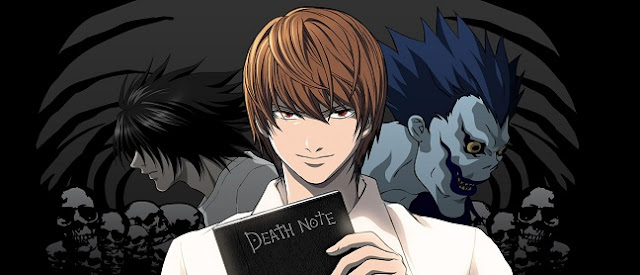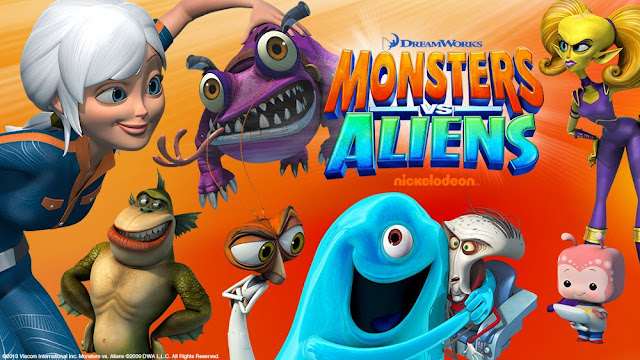A Teenager Makes a Faustian Deal in Death Note (2006 - 2007)
I'm very late to the party for this animated series, but better late than never: If you love unique titles in horror TV, then Death Note is an absolute must-watch.
Death Note started as a manga series written by Tsugumi Ohba and illustrated by Takeshi Obata between 2003 and 2006. An anime adaptation of the manga series aired in Japan from 2006 to 2007, running for a total of 37 episodes; this review covers the anime series. I noticed that this series was finding a fan base in the U.S. years ago, but I didn't bother watching it until Netflix started carrying it. Now that I've finally watched the whole thing, I can say that its popularity is completely justified.
Death Note tells the story of Light Yagami, and exceptionally intelligent teenager who stumbles upon a supernatural notebook called a "Death Note". According to the rules stated within the book, people who have their names written on its pages will die shortly afterwards. Convinced that the Death Note can help him bring about a better world by getting rid of "bad" people, Light uses it to go on a killing spree against criminals--and anyone who gets in the way of his vision. The Japanese police soon notice that jailed felons are dying by the dozens and launch their own investigation, thus beginning a cat-and-mouse game between Light and the detectives who are determined to stop him.
Because its main character is an anti-hero, Death Note shares some thematic similarities with live-action TV shows such as Dexter and Hannibal. However, Light is in a league of his own when it comes to committing evil deeds according to a deranged moral code. Light sees the Death Note as his path to godhood and that whoever he kills in the process--and however he kills them--is completely justified in order to remake the world according to his rule. His sinister plotting also prompts him to experiment with what the Death Note is fully capable of doing to both its user and its victims, which leads the story into a variety of unexpected twists and turns. If the authors of ancient Greek tragedies were alive today, they'd love Death Note.
Deadly delusions of grandeur: Light Yagami in Death Note.
Death Note also stands apart from other horror TV fare by taking its time to play with the cursed artifact trope. Whenever a cursed artifact shows up in an anthology series such as The Twilight Zone or Night Gallery, it is usually part of a tidy, single-episode morality play where the user of the artifact is inevitably condemned to suffer an ironic fate. Whenever a cursed artifact shows up in an serialized show such as Warehouse 13 or The Librarians, protagonists who are well-versed in the supernatural arrive at some point in the episode to stop the artifact and/or its user before too many people are killed. Neither of these narrative patterns apply to Death Note; in this case, a single cursed artifact is the foundation of the story and everything else that happens during the series--character developments, narrative arcs, etc.--tie back to the artifact. I've never seen another horror TV show quite like this, and it was intriguing to watch a plot device that is normally tossed aside at the end of an episode become the focal point of an entire series.
I could say more about this series, but that would be giving away too much. Even if anime isn't your preferred form of TV entertainment, Death Note is still a quality series for anyone who is a horror fan.






Comments
Post a Comment